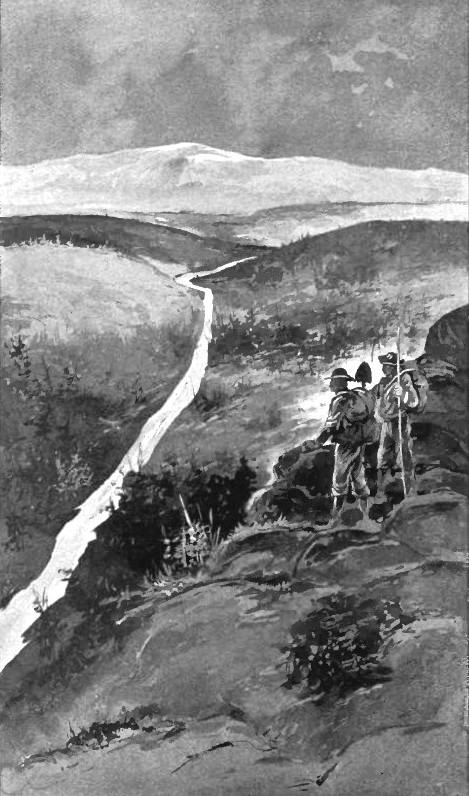Historically, about 60 per
cent, of the world's output of zinc ore is contributed by the United States,
Australia, Germany, and Poland. About 30 per cent, is produced by Italy,
Spain, Sweden, France, Algeria, Tunis, Mexico, and Russia. The remaining 10
per cent, is produced chiefly by Austria and Hungary, Greece, China, Japan,
Great Britain, and Canada.
AUSTRALIA. One of the most productive zinc mines of the world is that of
Broken Hill in New South Wales, where
sphalerite occurs associated with
galena. The Broken Hill mines alone furnish about a fifth of
the total world's production of zinc. The concentrated zinc ores of
Australia contain on the average about 47 percent, of zinc. Zinc-lead ore
deposits of some importance are worked in the Read-Rosebery district of
western Tasmania. The chief ore-bodies have arisen by replacement of calc-schist,
but there are also vein deposits, and the ore is oxidized at the surface.
The concentrates contain on the average 43.3 percent, of sphalerite, 31
percent, of
pyrite, 10.4 percent, of galena, and 1-2 per cent, of
chalcopyrite, together with small amounts of
quartz, barite,
calcite,
rhodochrosite and
tetrahedrite. They contain also on the average 3 dwt. of
gold and 10 oz. of silver per ton. The ore-bodies occur in
calc schists, and are supposed to be genetically connected with the Devonian
granitic intrusion and associated tin ore deposits of North Dundas some
three miles away.
GERMANY and POLAND. -An important region concerned in the production
of zinc ore is Poland, where sphalerite is found abundantly in association
with oxidized zinc ores, galena, and pyrite.
ITALY. The zinc ore produced in Italy is obtained mostly from
Sardinia, where zinc-lead ores are found abundantly in the Lower Palaeozoic
rocks of Iglesias. The veins occur chiefly in the Silurian slates and
limestones, into which
granites have been intruded in this area. The ore minerals
are sphalerite, galena, and the oxidation products of these sulphides,
associated with quartz, barite, calcite,
siderite, and occasionally
fluorite.
Copper ore minerals are remarkably scarce in the veins.
At the Malfidano mines,
north-west of Iglesias, a rich "smithsonite" ore consisting of smithsonite
and hemimorphite, and containing 45 to 50 percent, of zinc, has been worked
extensively. At Nebida, near the Coast west of Iglesias, "smithsonite" (smithsonite
and hemimorphite) occur in the form of pipes in limestone. Some of these
pipes have a diameter of 60 feet; they extend to a depth of 600 feet and
yield ore containing 45 per cent, of zinc.
SPAIN. The chief zinc-mining areas in Spain are in the provinces of
Santander and Murcia. The zinc-lead ore deposits around Cartagena, in the
latter province, in which sphalerite is associated with
silver ore and galena. In Santander, the ore worked is
chiefly of the oxidized type; smithsonite is the chief ore mineral, and the
ore is one of very good quality. The Santander deposits are found mostly in
the Carboniferous limestone of the Cantabrian Mountains. They occur in the
form of pockets and irregular masses, in the vicinity of which the limestone
is dolomitized. Zinc ores occur also in the Cretaceous strata of Santander.
These oxidized surface ores of Santander have arisen in the usual way from
the alteration of sphalerite, which is the ore mineral below the zone of
oxidation.
FRANCE. Zinc ores are mined at Malines in Gard, Bormettes in Var, and
Planioles in Lot. In all these localities sphalerite is the predominant ore
mineral, and the galena found in association with it occurs in comparatively
small amounts. The most productive mines are those of Malines where the ore
is found in
dolomite limestone of Jurassic age. Other notable French zinc
ore deposits are worked in Hautes-Pyrenees, Ariege, and Lozere.
ALGERIA AND TUNIS. Zinc ores have been mined extensively in the
departments of Constantine and Alger in Algeria; and zinc-lead ore is mined
at numerous localities in Tunis. These Algerian and Tunisian ores are
largely of the oxidized (smithsonite) type, but below the oxidation zone
there is an abundance of sphalerite and galena.
MEXICO. Zinc ores are abundant in northern Mexico, and have been
mined chiefly in the States of Chihuahua and Coahuila, though they occur
also in San Luis Potosi and other States. At some localities, as at Picachos,
oxidized ores (smithsonite) are mined. At other localities the ore mineral
is sphalerite, obtained as a by-product in mining argentiferous galena, with
which it is associated.
POLAND. Zinc ores are mined in Russian Poland. The ores worked there
have been chiefly of the oxidized (smithsonite) type, which occur as
replacements of Muschelkalk dolomite, and resemble those of Poland.
RUSSIA. An
important deposit of zinc ore has been worked in recent years at the
Tynticha mine near Olga Bay, 200 miles north-east of Vladivostok. The
deposit is estimated to have contained over 200,000 tons of ore averaging 48
per cent, of zinc. Another and still more important Siberian deposit occurs
at the Ridder mine in the Semipalatinsk district of south-western Siberia.
This ore-body has been estimated to contain 883,000 tons of sulphide ore
with 31 percent, of zinc; and about 25 million tons of lower-grade ore
containing about 5| percent, of zinc.
SWEDEN. Zinc ores are mined near Ammeberg in southern Sweden, where
lenticular deposits containing sphalerite and galena occur in pre-Cambrian
schists and
gneiss. The zinc concentrates obtained at this locality
contain about 40 per cent, of zinc and 3 percent lead. Another notable
Swedish deposit is that at Sala, where sphalerite associated with galena and
pyrite occur in a dolomite formation.
GREECE. In the
Laurium district of Attica in Greece, zinc ores occur as veins and
irregular masses in a crystalline limestone which is interbedded with
mica-schist. The schists and limestones are traversed by intrusions of
granite and porphyry and other igneous rocks. The ore minerals are
argentiferous galena,
cerussite, sphalerite, and smithsonite, associated with
pyrite, siderite, and copper minerals. The Laurium zinc-lead ores have
yielded a large amount of silver metal.
BRITISH ISLES. Zinc ore is mined at various localities in the
Palaeozoic rocks of the British Isles, notably in Cumberland and
Northumberland, where it occurs in veins that traverse Carboniferous strata;
and in Wales and the Isle of Man, where it occurs in Ordovician rocks. The
ore mineral is chiefly sphalerite, which is usually associated with galena,
pyrite, chalcopyrite, calcite, siderite, barite, and fluorite. CANADA.
The zinc ores of Canada are obtained almost wholly from the West Kootenay
District of British Columbia, notably in the Slocan, Nelson, and Ainsworth
Divisions. In the Slocan Division argentiferous galena and sphalerite occur
as veins and replacements in slates and limestones of Palaeozoic age. The
pipe-like masses occurring as limestone replacements have yielded
concentrates containing 40 per cent, of lead, 10 per cent, of zinc, and up
to 90 oz. of silver per ton. Siderite, chalcopyrite, and tetrahedrite are
associated with the sphalerite and galena. In the Ainsworth Ditrict the
zinc-lead ore occurs in schists and crystalline limestones of pre-Cambrian
age. The ore minerals are sphalerite and galena, associated with pyrrhotite
and chalcopyrite.
MYANMAR (BURMA). Argentiferous lead-zinc ores form large deposits at
Bawdwin, in the Northern Shan States of Upper Burma, in a much-fractured
zone of overthrust traversing felspathic grits and
rhyolite tuffs of Cambrian age. The ore minerals are argentiferous
galena and sphalerite, and associated with these are chalcopyrite, pyrite,
cerussite, smithsonite, anglesite, barite, and other minerals. The ore is
thus of a complex type. The concentrates yield from 24 to 30 percent, of
lead, 14 to 30 percent, of zinc, and up to 40 'oz. of silver per ton.
ZIMBABWE (formerly RHODESIA). An unusual type of zinc-ore deposit occurs at
Broken Hill of Northern Zimbabwe, where sphalerite is found associated with
galena, forming irregular masses and impregnations in dolomite of
pre-Cambrian age. The ore is oxidized at the surface, being made up largely
of lead carbonate and zinc silicate. The zinc phosphates, hopeite and
tarbuttite, and the vanadium mineral descloizite occur in the oxidized ore.
JAPAN. Zinc ore has been mined at numerous localities in Japan, but
the most important of these are the Kamioka mines in Hida province. The ore
mined here consists of sphalerite associated with argentiferous galena. It
contains about 13 per cent, of zinc, 2 per cent, of lead, and 4 oz. of
silver per ton. The ore is dressed to yield zinc concentrates containing 45
percent, of zinc.
Return
to Metal Ores Page:
Precious and Base Metal Ores


